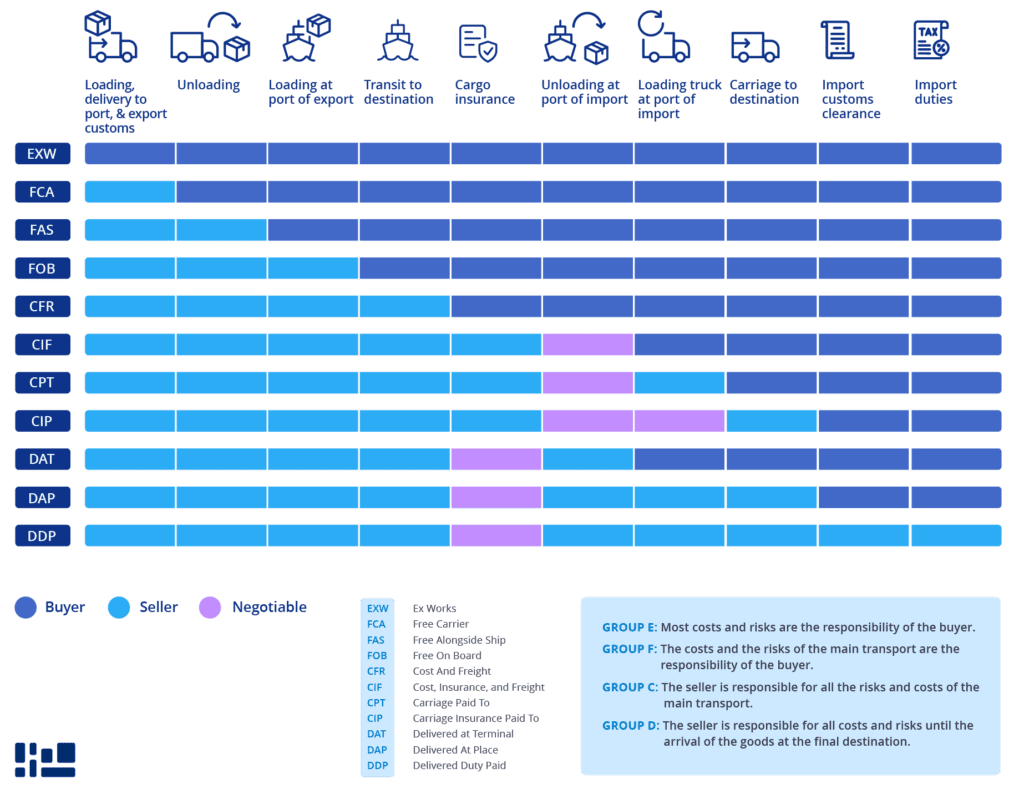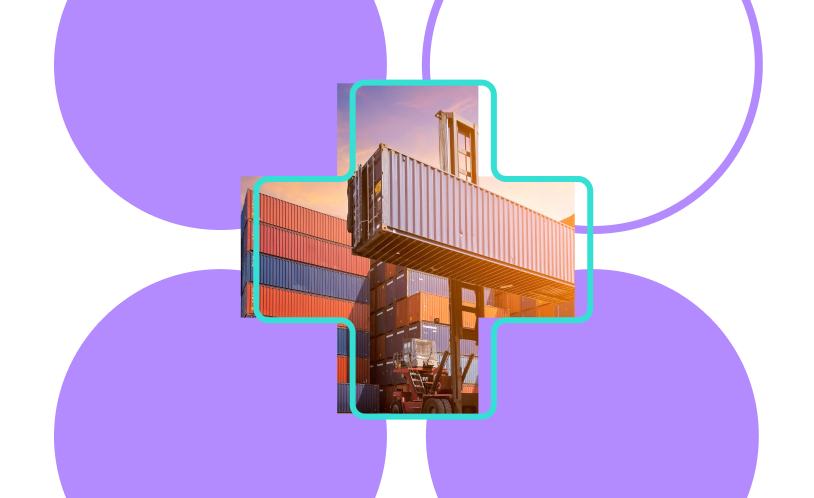Part of the Comprehensive Incoterms Guide
International trade is complicated.
And while no two countries have exactly the same laws, when it comes to freight there are many precepts that are standardized worldwide.
This means that no matter where you ship from, you will encounter the same regulations. One of the most prominent examples of this standardization is the International Commercial Term, or incoterm.
Simply put, an incoterm is the standard contract used to define responsibility and liability for the shipment of goods. It plainly lays out how far along into the process the supplier will ensure that your goods are moved and at what point the buyer takes over the shipment process. It also has implications for your total freight costs.
FOB Incoterms & More

Free On Board (FOB)
Of the 11 different incoterms that are currently used in international freight, Free on Board (FOB) is the one that you will encounter most frequently.
This guide cuts through the legal jargon and explains everything you need to know about this common incoterm in plain English.
FOB Shipping Meaning
First, let’s define what FOB (free on board) means by breaking it down word-by-word.
The term ‘free’ refers to the supplier’s obligation to deliver goods to a specific location, later to be transferred to a carrier.
In other words, the supplier is “free” of responsibility. ‘On board’ simply means that the goods are on the ship.
As such, FOB shipping means that the supplier retains ownership and responsibility for the goods until they are loaded ‘on board’ a shipping vessel. Once on the ship, all liability transfers to the buyer.
The FOB incoterm is only applied to shipments being sent by sea or waterway
The further clarify, let’s track the FOB shipping process:
- You purchase goods from a supplier in China and agree to FOB shipping terms. The next three steps of the process are carried out at the supplier’s expense.
- Your goods are packaged and loaded onto a truck (or another form of transportation) at the supplier’s warehouse (or another facility).
- The truck brings the goods to the port.
- The goods are loaded on board the shipping vessel.
- Once aboard, the rest of the journey from China is now both your liability and your expense. Anything that happens from this point is on you.
The concept is illustrated below:

There are situations where you may be responsible for covering costs before your goods are on board.
When you are shipping loose cargo (ie, not a full container), for example, your goods must go through a Container Freight Station (CFS) to be consolidated into a container.
Some suppliers do not cover the cost of consolidation.
FOB Shipping and Pricing
For FOB shipping, you can get an FOB price estimate using Freightos.com’s International Freight Rate Calculator.
Just enter the dimensions and weight of your goods and specify the port of shipment, and you’ll get your FOB price calculation instantly.
If you are sending a full container load (FCL), enter the information under the Containers tab.
What is the Difference Between FOB Shipping Point and FOB Destination?
The qualifiers of FOB shipping point and destination are sometimes used to reduce or extend the responsibility of the supplier in an FOB shipping agreement.
With FOB shipping point, ownership of goods is transferred to the buyer once they leave the supplier’s shipping point.
From there, the title for the goods transfers from the supplier to the buyer immediately and if anything happens to the goods at any leg of the journey to the buyer from there, the buyer assumes all responsibility.
With FOB destination, ownership of goods is transferred to the buyer at the buyer’s loading dock.
Upon delivery of the goods to the destination, the title for the goods transfers from the supplier to the buyer.
If anything happens to the goods on any leg of the journey to the buyer, the supplier assumes all responsibility.
FOB Shipping Point
When the terms are FOB shipping point, the supplier relinquishes all of his responsibility for the goods at his shipping point and the buyer is obligated to cover the freight costs required for getting them to the desired location.
To further clarify, let’s assume that Claire’s Comb Company in the US purchases a container of The Wonder Comb from a supplier based in China.
An FOB shipping point agreement is signed and the container is handed off to the freight carrier at the shipping point.
If sending the container to the US costs $1000, Claire’s Comb Company is responsible for paying that sum in full in order to get the goods.
FOB Price: What is the Difference Between FOB and other sea shipping incoterms?
There are four incoterms that are applied exclusively to ocean shipments: FOB, FAS, CFR, and CIF.
Understanding the differences between each is as simple as knowing how much responsibility the buyer and supplier assume under each agreement.
What is the Difference Between FOB and FAS?
Free Alongside Ship (FAS) is a barebones ocean freight shipping option. It requires the supplier to pay for the delivery of your goods up until the named port of shipment, but not for getting the goods aboard the ship.
The buyer takes responsibility for the shipment once it is placed alongside the shipping vessel.
Unlike FOB shipping, the supplier is not required to ensure the safe movement from port to ship.
What is the Difference Between FOB and CFR?
Cost and Freight (CFR) puts the costs associated with transporting your goods to the destination port on the supplier.
This includes any fees associated with export, in addition to the cost of sending your freight to the port of destination.
Once the delivery is unloaded in the receiving country, responsibility is transferred to you.
CFR includes neither insurance nor the costs associated with getting the delivery to your final destination. Also excluded are customs duties.
What is the Difference Between FOB and CIF?
Cost, Insurance, Freight (CIF) puts the liability of payment for – you guessed it – cost, insurance, and freight on the supplier.
This means that your shipment is in the proverbial hands of the supplier through the process of transporting them to a port and loading them aboard a ship. They also cover insurance costs.
The buyer still pays additional fees like customs clearance, however.
Depending on the agreement with your supplier, your goods may be considered delivered at any point between the port of destination and your final delivery address.
CIF is a more expensive contract option than FOB, as it demands more effort and expense on the part of the supplier.
Suppliers often charge a premium on this service make the effort worth their while.



